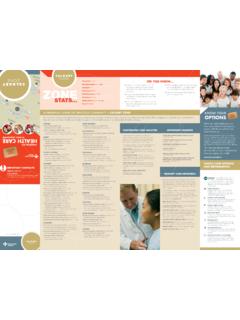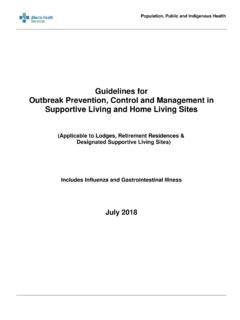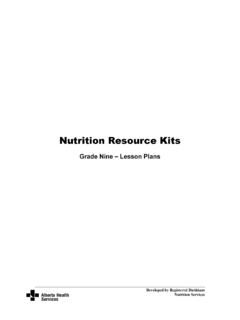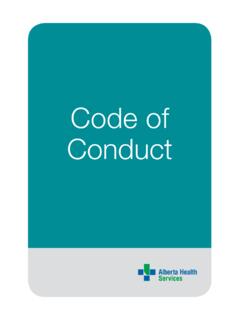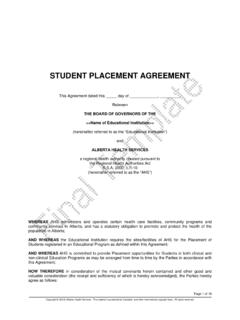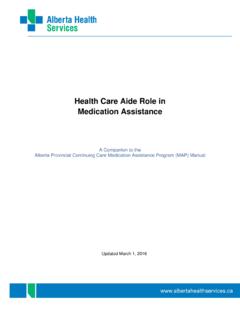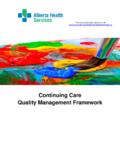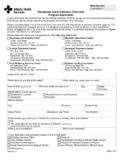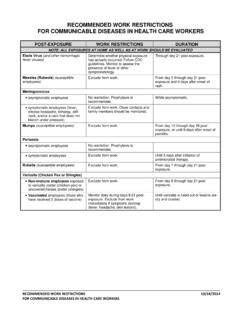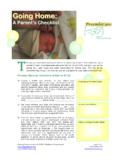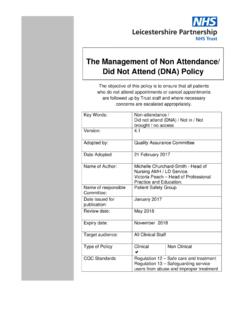Transcription of 200 14 Gail Elton-Smith , Stroke Program …
1 template DESIGN Stroke Program Edmonton Zone s Experience with the Implementation and Evaluation of the AlphaFIM Assessment Tool Gail Elton-Smith , Stroke Program Edmonton Zone Shy Amlani, Stroke Program , Edmonton ZoneMethodsResultsConclusionReferencesCo ntact informationIntroductionGail Elton SmithStroke Service Coordinator Stroke Program , Edmonton ZoneAlberta health ServicesTel:780-407-8729fax:780-407-2809 Email: AmlaniManagerStroke Program , Edmonton ZoneAlberta health ServicesTel: 780-407-7926 fax: 780-407-2809 Email: From 2009-2013, SPEZ, facilitated the training of 139 staff from the Grey Nuns (GNCH), University of Alberta (UAH), Royal Alexandra (RAH) and Sturgeon Community (SCH) Hospitals using grant funding from the Alberta Provincial Stroke Strategy (APSS).
2 Assessment of patients using this tool commenced in October 2010 and were faxed to SPEZ for the data from Jan 1-Dec 31, 2013, we set out to accomplish the following: Compare Burden of Care Scores between the sites Determine if the patient s location upon discharge from the Acute care site and/or Rehabilitation Facility corresponded to their initial Burden of Care Score Review Burden of Care Scores for those patients discharged to In-Patient Rehabilitation Sites to explore the effectiveness of our Rehabilitation Referral System and review appropriateness of referral location Compare Initial Projected AlphaFIM scores to the Glenrose Rehabilitation Hospital (GRH )
3 Admission FIM Scores, to determine validity and evaluate AlphaFIM assessment time-lineTo achieve the above, AlphaFIM scores between Jan 1 Dec 31, 2013 were separated into Burden of Care Hours and compared against the participating sites and with each patient s location upon discharge. An in-depth review of all patients discharged to the GRH for on-going rehabilitation was conducted. Chart reviews were performed for all patients with a Burden of Care Score of >8, 7-8, 1-2, <1 or 0. The projected AlphaFIM scores of those patients with a burden of care of >8 were compared to their GRH admission FIM scores. For those patients with a Burden of Care Score of less than 2 hours, barriers to Outpatient admission were AlphaFIM instrument is an assessment tool designed to facilitate discharge planning of Stroke patients from acute care by measuring performance in six key Functional Independence Measure (FIM) items to deduce overall functional status.
4 Done within 72 hours of admission, the AlphaFIM was developed to obtain expected FIM ratings and project expected minutes of care upon discharge. These expected minutes of care allow staff to understand a patient s resource needs for performing activities of daily living and are to be used to assign a probable discharge disposition. (Uniform Data System for Medical Rehabilitation)In October 2010, this tool was implemented in the acute Stroke programs for the purpose of assisting with discharge planning. Verbal feedback from the Stroke teams indicated they were not confident in the scores obtained in the initial assessment and therefore were not using it as a discharge tool.
5 SPEZ originally set out to review the data to determine its accuracy and provide feedback to the Stroke teams in this regard. While not successful in proving its usefulness as a discharge tool in its present state, review of the data did pose further questions regarding the impact of tPA on Burden of Care, and revealed a discharge pattern to our In-Patient Facilities that ultimately exposed gaps in outpatient services. 050100150200250300 UAH (276)GNCH(185)SCH (44)RAH (20)Comparison of Burden of Care Scores between HospitalsDischarge Location Compared to Burden of Care Scores0102030405060>87to8 6to7 5to6 4to5 3to4 2to3 1to2<10 UAHGNCHSCHRAH05101520253035>87to86to75to64to53to42to31to2<10 LTC/DiedAcute CareIn-Pt RehabOut-Pt RehabHome02468101214161820>8 7-8 6-7 5-6 4-5 3-4 2-3 1-2<10 Glenrose HospitalAdmissionsn=117 Burden of Care Scores for Admission to In-Patient Rehabilitation02468101214161820>8 7to8 6to7 5to6 4to5 3to4 2to3 1to2<10 HomeLTCD eceasedInpt RehabDischarge Location for GRH Admissions01020304050607080 Projected AFFIMC ompleted Initial AlphaFIM Assessments for
6 2013 (N=525)020040060080010001200 UAHGNCHSCHRAH# of AlphFIMassessmentsperformedTotal # admittedTotal # AlphaFIM assessments/Total # Stroke AdmissionsFeedback from the UAH and GNCH questioned the accuracy of this result. Further investigation revealed the inclusion of patients seen in Emergency departments where AlphaFIM scores are not recorded as well as possible inclusion of some TIA higher than expected number of admissions to In-Patient Rehabilitation for those patients scoring >7 or <2 hours on the Burden of Care scores led to an in-depth review of all admissions to the GRH within these very high number of patients scoring 0 on their Burden of Care was unexpected, and will require further study.
7 Both the UAH and GNCH are tPA sites, posing the question of whether administration of tPA is a determining from the GRH included concerns regarding the validity of the >8 hour scores due to the requirement that the AlphaFIM be administered within 72 hours of CVA as patients still on bed-rest would be included in this group. The high number of admissions for those patients scoring <2 hours was felt to be due to lack of Rehabilitation programs outside of the Edmonton City limits, lack of family support and/or transportation to out-patient programs as well as inadequate outpatient services for those with speech and cognitive deficits within the Edmonton AlphaFIM vs GRH Admission FIM (>8 hour Burden of Care)
8 Chart review of these patients indicated a range between 21 and 75 days between date of AlphaFIM and Admission FIM assessments with an average number of days equaling The success rate for discharge back to the community for those patients with a Burden of Care score >7 hours was 75%, with 9/12 patients returning to their place of residence prior to the of the AlphaFIM data from 2013, while not able to prove its utility as a discharge tool, did reveal obstacles to timely and effective transitions within our Rehabilitation referral system. The higher than expected rate of admissions to an In-Patient facility for those with low Burden of Care score revealed a gap within our out-patient services for those patients with primarily speech and cognitive deficits.
9 The lack of outpatient services beyond our city limits but within our zone was also from the teams during the review also revealed concerns regarding the 72 hour deadline for the initial AlphaFIM assessment impacting the scores accuracy, especially for the most severe Stroke survivor. Review of the sample of patients with a Burden of Care score >8 who were admitted to the GRH revealed a long delay between their AlphaFIM assessment and admission, but a very high success rate in their eventual discharge back to their community. This delay was shown in the in-depth chart review to be either due to the time period before the patients were deemed suitable as a rehabilitation candidate or the waiting period before an in-patient bed became available.
10 1999 -2014 Uniform Data System for Medical Rehabilitation, a division of UB Foundation Activities, Inc. Retrieved September 27, 2014 from: next stage of this project will involve expanding the 72 hour assessment window to between 5-7 days. Data for the year collected will then be compared against data from 2013 to determine if this impacts the overall Burden of Care Score range as well as the Projected AlphaFIM to FIM investigation into the barriers to Out-Patient admissions will require 2 stages. The first stage will involve discussion amongst the current programs within the Edmonton Zone to identify barriers to accessing their services as well as determine possible solutions for removing them.
